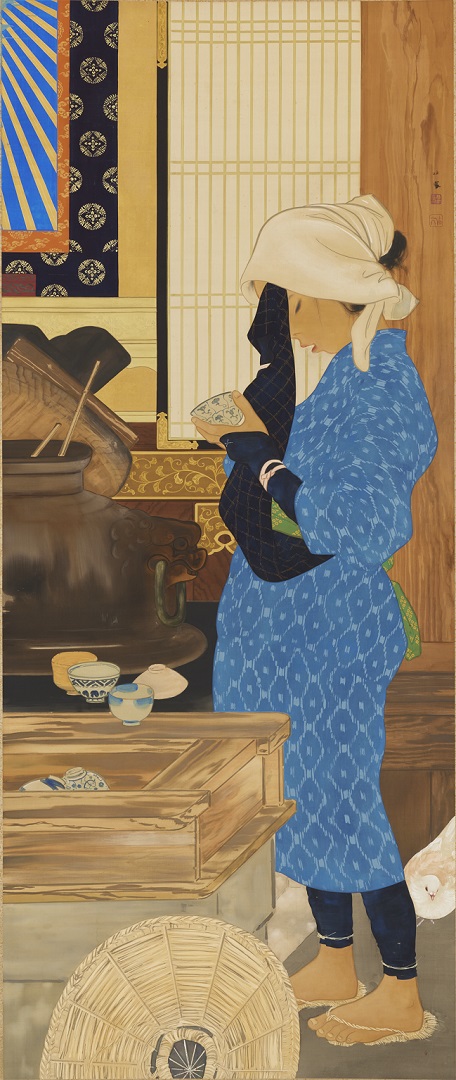Watch, Read, Listen
Recent Additions to the Collection Newsletter of the National Museum of Modern Art, Tokyo Takeuchi Seiho, Day Labor, 1917
BackDay Labor drew attention when it was shown in the Takeuchi Seiho exhibition held at the museum in 2013, nearly 100 years after it was painted. This year we were finally able to acquire it, and it is on view in Room 10 of the MOMAT Collection exhibition from October 12 to December 4, 2022.
This work appears not to be typical of Seiho, and this was his intention from the start. Seiho stated, “I submitted it to an exhibition with the goal of receiving criticism,” and “As someone who does not have to worry about being rejected during the selection process, I thought I needed to occasionally conduct unusual experiments and present people with questions” (Taiyo, November 1917, other quotes below from same source). Seiho cited two specific differences between this painting and his previous ones: (1) application of gold leaf in the background made the work too vivid, leading him to darken the entire picture to balance it out, and (2) he used color and pattern instead of line to produce roundness in depicting the young woman.
There are other distinctive features that differentiate it from other works by Seiho, such as: (3) the portrayal of a laborer, (4) a pose that is not immediately clear, (5) crowding of the picture with abundant motifs, and (6) numerous objects and surfaces overlapping as they recede into the background, creating a sense of depth. In short, this painting is chock full of new approaches with which Seiho experimented only this once.
Seiho related his inspiration for this work, recalling summer afternoon in a rest area at Higashi Hongan-ji Temple. There, he saw a young female day laborer sipping tea with a scroll of the Buddha (Amitābha), surrounded by a radiant halo, in the background. This scene gave him the idea of juxtaposing the earthly and the divine. The scene in a rest area reminded him of “an old painting [he] had seen in an Italian temple while traveling around Europe.”
What sort of painting was it that Seiho saw in this temple in Italy? It may have been one of a type containing a sacred scene flanked by secular figures such as patrons. In Seiho’s work, the young woman’s pose resembling a typical gesture of prayer seems designed to evoke a similar impression.
In reality, the young woman is holding a teacup in her left hand, and wiping sweat from her brow with a navy-blue hand towel tucked into her obi (kimono sash) with her right. On the surface, the painting appears to depict an ordinary slice of modern life. In later years, when the Nihonga (Japanese-style) painter Kaburaki Kiyokata advocated shakai-ga (lit. “social painting,” a term he coined for contemporary social realism), he held up this work as an example (Bungei, July 1934).
(Gendai no me, Newsletter of The National Museum of Modern Art, Tokyo No.637)
Release date :



